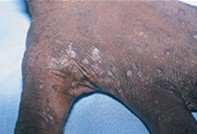Peer Reviewed
Feature Article Infectious diseases
Infectious diseases of tropical Australia
Abstract
In the north of Australia, there are two additional medical issues to consider – Aboriginal health and the specific diseases of the tropics. With global warming, infections that are generally restricted to the tropics and have, to date, been more common in tropical Australia may be seen further south in the continent.
Key Points
- There is continuing disparity in morbidity and mortality between Aboriginal people and other Australians. Aboriginal mortality in the 20- to 40-year-old age group is up to 10 times that for other Australians, and life expectancy is 10 to 20 years lower.
- Outbreaks of Ross River and Barmah Forest viruses occur throughout Australia, but are more common in the tropical north. The infection can be asymptomatic.
- The Murray Valley encephalitis virus is endemic in the Kimberley region of Western Australia and adjacent Northern Territory. Possibly only 1 in 1,000 infected have clinical illness, but mortality is 20% in these patients and residual neurological disease occurs in up to 40%.
- Melioidosis is the most common cause of fatal community-acquired bacteraemic pneumonia in the top end of the Northern Territory.
- Pulmonary haemorrhage from leptospirosis is increasingly recognised in north Queensland.
- The reintroduction of dengue continues to cause outbreaks in north Queensland.
- Scrub typhus is transmitted by bites from infected larval mites. A skin ulcer with a black crust (eschar) may develop at the bite site; delay in treatment may lead to multi-organ failure.
- Global warming may extend the endemic range of tropical diseases in Australia.
Purchase the PDF version of this article
Already a subscriber? Login here.

